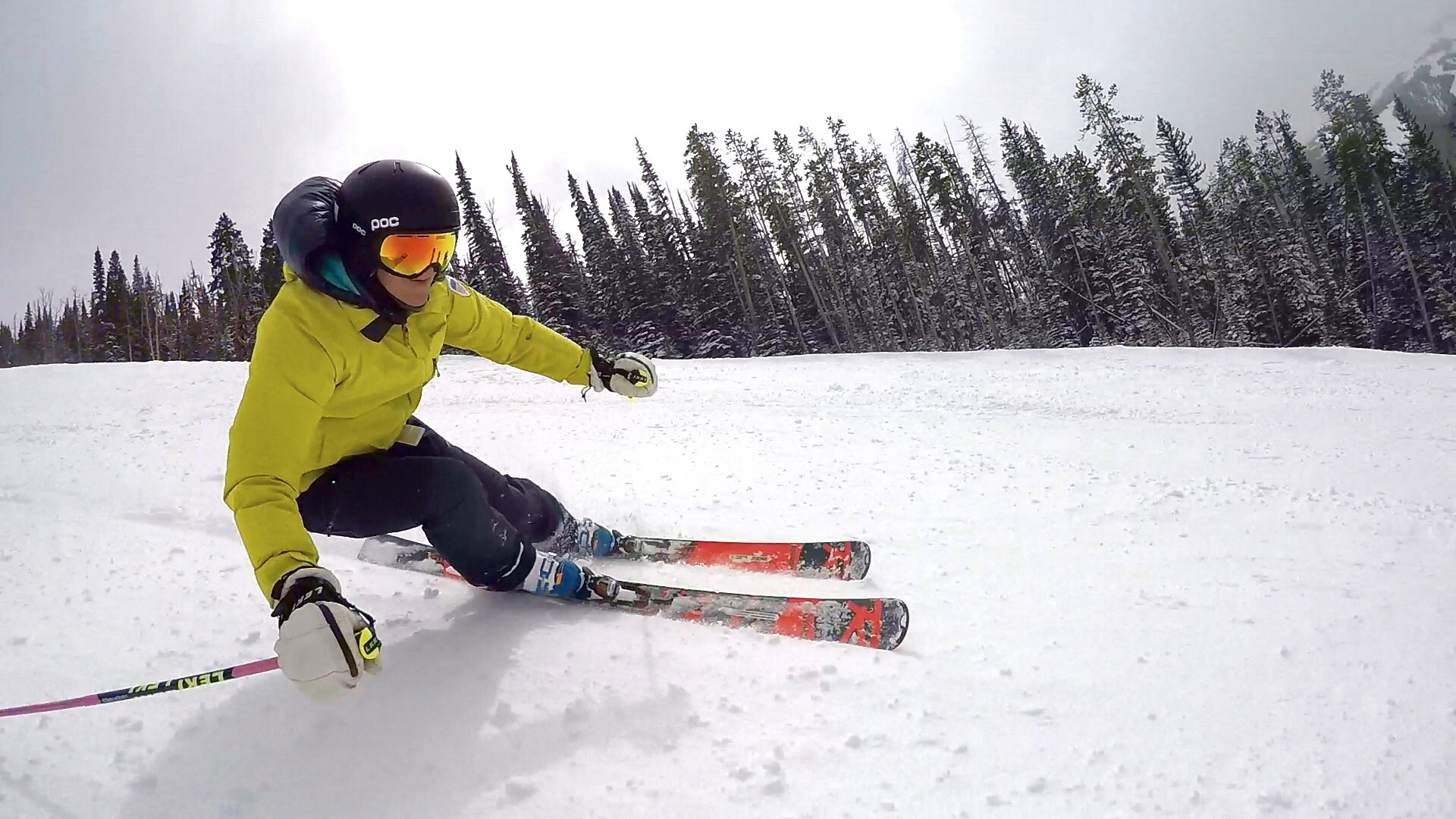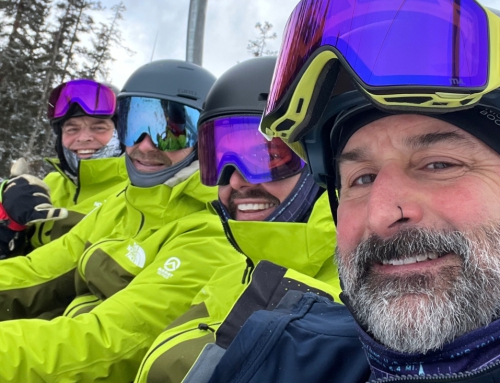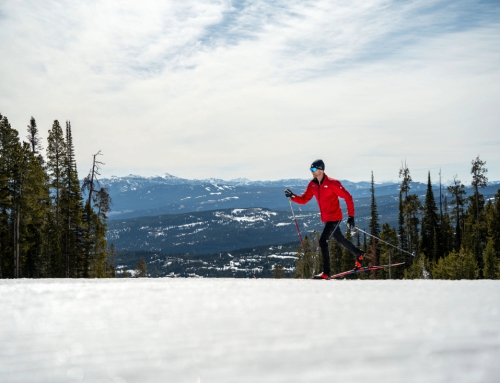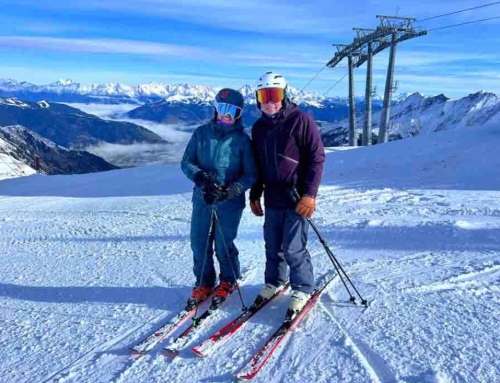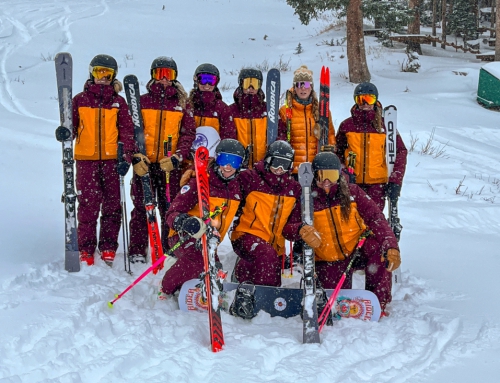Improving Touch with the Underrated Fifth Fundamental
Have you ever travelled with your slalom skis, only to wake up to a foot of new snow? Wrong skis for such right conditions! And, in general, how do you feel about high-speed carved turns though giant bumps? I’m sure you’re cringing along with me because this is another example of a difficult match, in this case a challenging tactic for the conditions.
How is it, then, that great skiers can make both things look easy? The short answer is that they have great touch. Great skiers can adjust for variability in snow conditions, terrain, and their skis, while still achieving (almost) anything they choose.
In terms of PSIA’s Alpine Skiing Fundamentals, having great touch is essentially the ability to “regulate the overall magnitude of pressure created through ski/snow interaction.” This also happens to be the fifth alpine skiing fundamental on the list, as presented in the new Teaching Snowsports Manual. Throughout this article, I use the phrases “touch,” “fifth fundamental,” and “regulating pressure” interchangeably.
To be clear, I call it the “fifth fundamental” not because the fundamental commonly appears last on the list of five, but because it is the most underrated. As examiners, trainers, and instructors, we often limit our explanations of this fundamental to “flexion and extension” and rely on bump progressions to facilitate understanding of pressure regulation. Coaching skiers to regulate pressure solely through flexion and extension is like teaching a baker to make cake only by adjusting the baking temperature. Flexion and extension are critical to managing the pressure, just as temperature is critical to baking the cake, but they are only two of many considerations. Here, we’ll consider some of the other factors.
The Role Physics Plays In Touch
Before I charge ahead, let’s get on the same page about some physics – specifically, the terms “force” and “pressure” and the relationship between the two.
Force, according to the Alpine Technical Manual, is a push or pull that acts on a body and changes its position or speed. For our layperson purposes, manipulating the forces in skiing requires accelerating, decelerating, or turning. Physicists put all of these under the blanket of “acceleration.” Because mass is tied to weight, we will consider mass fixed and ignore it. Gravity is a separate, and also very relevant, force. In steeper terrain, as we turn across the fall line, we experience greater force due to the pull of gravity.
Pressure is the amount of force distributed over a given area. Force directed over a larger surface area will decrease pressure, whereas concentrating the same force over a smaller area will increase the pressure.
To help you visualize pressure and force at work, imagine pushing the tip of a screwdriver as hard as you can into a wall. Would it leave a mark? Yes, and it might actually puncture the drywall. Now imagine trying to do the same thing with a coin, like a quarter held flat against the wall. Your strength, or force, has not changed. The screwdriver leaves a mark because it has a smaller surface area and exerts more pressure. The quarter probably does not.
Physics helps us identify how we and our skis either concentrate or dissipate force – thereby increasing or decreasing pressure –and how that pressure can impact the snow.
Three critical components of great touch include our movements, our skis, and the snow. With these three elements in mind, we can make some assumptions about the magnitude of pressure in a turn even before leaving the lodge. Let’s take a closer look at the three elements and consider how each impacts pressure.
How Your Movements Influence Touch
In addition to flexion and extension, the other four Alpine Skiing Fundamentals are inextricably linked to creating pressure. Every movement (whether fore/aft or side to side) related to edging or rotation will change the pressure on the snow. Movements do this by distributing forces over a larger or smaller surface area, and/or by directing force to a specific part on the ski.
Thinking broadly, a carved turn is a high-pressure turn. It requires deliberate movement toward the tip of the ski and high edge angles – both of which concentrate force to a smaller surface area. Conversely, a pivot slip or a hockey stop is a low-pressure turn. It requires maintaining the center of mass aligned precisely over the feet as well as a low edge angle – both distribute force more evenly over the ski.
Now think about your favorite teaching cue. Does it increase or decrease pressure in the turn? Movements are neither good nor bad, but it is important to know that all of them impact pressure regulation one way or another. The more awareness of the subtle differences in pressure, the better we will be able to adapt to snow conditions and improve our touch.
Use Ski Design to Regulate Pressure, Force
Now that you’ve considered your movements, take a look at your quiver of skis and ask yourself the following questions: Are your skis skinny or fat? Stiff or soft? Do they have traditional camber? Tip rocker? Were they recently tuned? How do you think these characteristics help concentrate or dissipate forces on the snow?
There are a host of ski characteristics that impact pressure. Understanding how your skis concentrate or dissipate force will help you change your movements to adapt to conditions.
Get to know your skis before the next time you get on snow. What do they naturally want? Skis that tend to concentrate pressure – like the Rossignol Hero Elite line that offer stiffer construction, narrower waists, and traditional camber – will more effectively hold an edge in firm snow, and be more likely to dive in softer conditions. They efficiently transfer pressure to the tip of the ski, and will react more dramatically when they encounter an obstacle. Freshly tuned skis will concentrate pressure even further.
Conversely, a ski like the Soul 7 (also from Rossignol) is designed to dissipate force with tip rocker, a 106mm waist, and relatively softer construction. It will float easily in powder, and require more accurate movements to carve on firm snow. Ski designers often combine features that concentrate pressure with others to dissipate it within the same ski. The Rossignol Experience 88Ti, for example, has tip rocker and a slightly wider waist combined with a relatively stiff construction to hold an edge on groomers yet dissipate some forces off-piste.
Taking what you know about how movements change pressure, what adaptations can you use to help your race skis float or your powder skis carve?
How Conditions Impact Touch
As far as I can tell, Mother Nature never considers whether or not we request a bluebird powder day; when we show up to ski, like it or not, we are going to ski the mountain and the snow as they are.
Before setting out for the day, consider what the snow will give you. Will it resist pressure, as in a firm groomer? Or will it give way and allow your ski to dive under too much pressure, as in softer snow or spring slush? Will the snow or terrain somehow increase the pressure you feel in a turn? Moguls cause a fast direction change, steep terrain increases exposure to gravity, and crud will tend to cause frequent changes in speed (acceleration) – all of which impact the magnitude and the timing of forces.
Attempting to make a high-performance carved turn in bottomless powder is asking the snow to do something it cannot: push back against a highly pressured ski. More generally, off-piste skiing typically lends itself to lower pressure choices with either softer or less predictable snow, and increased effect from gravity in steeper terrain. On-piste skiing on the other hand, lends itself to higher-pressure tactical choices. As with anything, these are not universally true, but good starting points to help anticipate pressure influences before we ski, and then to adapt with more nuance later.
Adapt When You Don’t Have the ‘Right Gear’
Touch – regulating the magnitude of pressure – is about making decisions to ski the snow as it is, and on the skis you have, instead of forcing your favorite turn into an inappropriate situation. Before you panic about your skinny skis on a powder day or teaching a race lesson on rockered skis, remember you have options. You can adapt your movements to create the overall magnitude of pressure you will need in a turn.
If the snow gives way under pressure, increase your surface area to dissipate the force. If you cannot engage your edge on firm snow, think about concentrating force to a smaller surface area, closer to the ski tip. In developing your touch, ask first what the snow wants, then check in on your skis, and, finally, figure out how you are going to ski.
This article originally appeared in the Spring 2019 issue of 32 Degrees. Log in now to the online version to access other great content that will up your instructor game.
Ann Schorling is currently in her first term as a PSIA Alpine Team member. She’s both an alpine and telemark examiner, currently teaching at Portillo, Chile, as well as Jackson Hole, Wyoming, where she coaches Jackson’s Elevate Women’s’ Camps.

